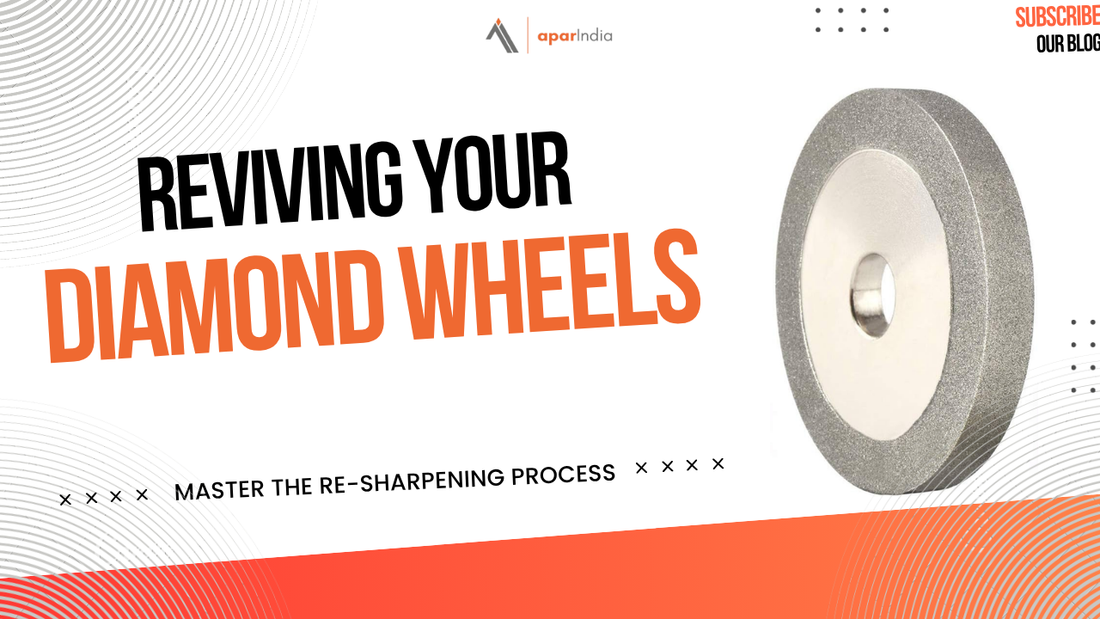
Dressing of Diamond Wheels – The Invisible Craft Behind Visible Precision
Share
In a buzzing manufacturing shop floor filled with the rhythmic hum of milling machines, drill and cutter grinders, and precision engineers in action, there lies one process that often escapes the spotlight—dressing of diamond wheels.
We didn’t always give it the attention it deserved. Like many in the machine tools industry, we focused heavily on tool design, machine performance, and carbide quality. But a few years ago, an unexpected production slowdown pushed us to look deeper.
Our premium tool and cutter grinding machine, known for delivering unmatched precision tools, started showing inconsistencies. New tools were not meeting quality benchmarks. There were microscopic inconsistencies—slight, but enough to affect the performance in high precision manufacturing.
One particular incident brought things to light. A batch of aerospace-grade tools failed quality checks in Europe. The feedback? "Tool edge breakdown during high-speed machining." We were stunned. Our machines were world-class, our carbide was certified, and our processes were benchmarked. So what went wrong?
The answer was found under a microscope—the diamond grinding wheel had glazed over. The abrasive surface was no longer cutting but rubbing. And that’s when we rediscovered the power of dressing.
What is Dressing?
Dressing a diamond wheel isn’t just cleaning or reshaping—it’s reviving. It’s the process of removing debris, exposing new cutting edges, and restoring wheel geometry. In precision machining, this is the difference between a blunt artist’s pencil and a finely sharpened one.
A diamond wheel, over time, clogs with metal particles from used tools, softens, and loses its form. Without dressing, your drill and cutter grinder becomes an expensive paperweight. The tools it grinds may appear sharp but lack true performance on the job.
The Turning Point in Our Workshop
After the aerospace incident, we revamped our entire grinding process. We introduced dedicated dressing cycles into every tool and cutter grinder, trained operators to identify signs of wheel wear, and invested in high-end dressing equipment.
The result?
-
Our tool geometry accuracy improved by 28%.
-
Tool regrinding efficiency went up by 35%.
-
Most importantly, our customer satisfaction and trust skyrocketed.
Today, dressing of diamond wheels is treated with the same seriousness as machine calibration. It’s no longer an afterthought—it’s a part of our core high precision philosophy.
Why This Matters in Modern Manufacturing
In today’s era of high precision manufacturing, every micron matters. Whether you're working on custom precision tools for the medical industry or heavy-duty machine tools for automotive dies, you need consistent performance. And that performance is born from how well you maintain your diamond grinding wheels.
At our facility, every tool begins its journey with a simple principle: Only a sharp wheel can create a sharper tool.
From used tools getting a second life to advanced manufacturing machines producing components for space missions, everything rests on one silent process—diamond wheel dressing.
The Invisible Hero of Precision
When clients visit our factory, they marvel at the grinding robots, the gleaming tool and cutter grinding machines, the automation. But when we take them to the dressing unit—a corner filled with what looks like simple wheels and dressing sticks—we always tell them:
“This is where your precision begins.”
So the next time you see a finely ground end mill or a flawless carbide insert, remember—the true magic began not at the grinding station, but where someone cared enough to dress the wheel behind it.
